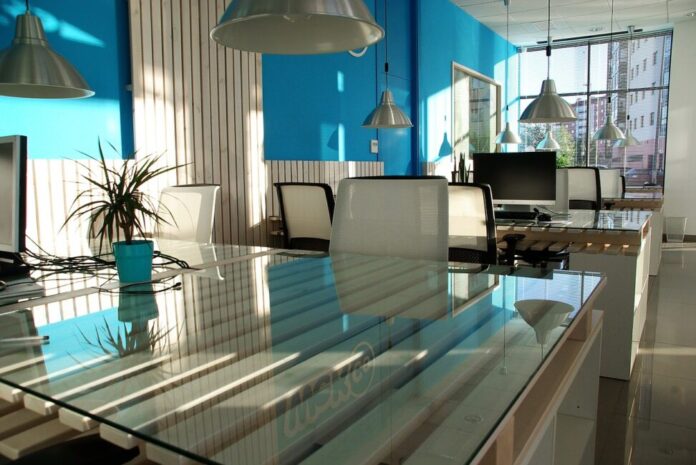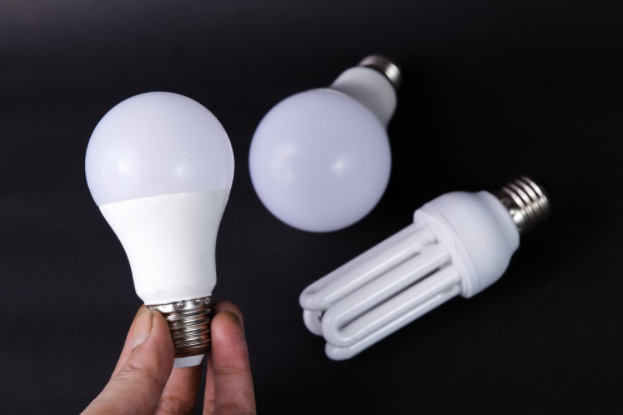The world is changing more rapidly than ever before. As technology advances, so does our efficiency in the workplace. With increased productivity comes a demand for better work conditions, and an award-winning office space can bring any worker to be more efficient. Office lighting affects the employees at different levels, so here is how to choose them.
1. Choose the right kind of lighting
The type of office lighting you choose has an effect on your employees. With fluorescent lights, there is a lower risk of eye fatigue and more of a focus on productivity. Fluorescent lighting is also the most environmentally conscious choice of lighting. Halogen lamps are an efficient source for long-term office spaces, because they last much longer than other types. On the downside, there is more risk to employees with this option, since these lights generate substantial amounts of heat and can be harmful if touched directly. Lighting that emits UVA rays causes damage to retinal cells overtime, thus creating potential problems with your eyesight as you age. If your employees are working in front of computer screens all day, it is important to know which type of light will benefit them most. By using industrial sizing and coating, you can get the most even lighting distribution. This is more cost-effective than specifying individual fittings for each workstation, not to mention it will save you time.
2. Know how much light is needed
Lighting quantity can determine how well your employees can see the objects they are working on, which will affect their productivity. The average human can adjust to any lighting conditions gradually. However, there is a threshold for how much light your employees need in order to create an ideal environment. Lighting should be bright enough that employees can discern colors and shapes comfortably. For some offices, this means increasing or decreasing lighting quantity based on season changes or time of day. With fluorescent lighting fixtures, even lighting is easily achieved, so you do not need to worry about fluctuations throughout the day. On the other hand, halogen lamps dim over time, so you may find yourself frequently adjusting the lights throughout the workday if your employees are required to always see clearly everywhere they look.
3. Positioning is key
Where you place your office lighting is most important for employees. It impacts where they are able to look, how they interact with surfaces in their environment, and creates an overall impression of the work environment. When you place your office lights at different levels throughout the room, it helps reduce glare on screens and improves employee vision by eliminating shadows. Direct light coming from windows can be bothersome since it casts over areas that are not being directly looked at by employees. To avoid this problem entirely, you can install blinds or shades on your windows to prevent sun rays from protruding into certain parts of the room. On the other hand, proper positioning requires placing lamps within arm’s reach, so they can be adjusted easily when needed. For commercial spaces, you can place lights further away and use touch-sensitive switches. It is also important to ensure that there is enough space between each light fixture for accessibility and visibility of task areas.
4. Choose a proper light color
The final thing about choosing the right lighting for your employees is choosing a proper color of light. Picking white or bluish tinted lights may not be as comfortable on the eyes due to their selective wavelength preference. This means colors such as red appear black, which can cause eye fatigue if exposed for too long without breaks. A solution would be selecting yellow tinted bulbs, which are easier on the eye. However, keep in mind that these lights are not as effective when there is three times more light than necessary because it will not reach deep into the retina. The simplest solution for all of these issues is to install recessed lighting fixtures near workstations, so they can easily be adjusted depending on the needs of each employee. It also helps reduce heat due to less frequent movement by employees. By using adjustable lamps, you can ensure your office lighting is properly distributed and optimized for maximum results while minimizing potential risks to both employees and equipment. The most important thing about proper commercial lighting is increasing productivity of your employees, which directly results in higher profits for your business.
So, by using the proper lighting in your place of work, you can increase productivity and thus better reap the benefits of running a business. Having bright lights increases employees’ productivity by helping them see their tasks clearly, while the color of light used helps reduce eye strain over long periods of time. By following these simple guidelines, you can ensure your employees are satisfied with their work environment and better benefit from working in a positive setting.
























